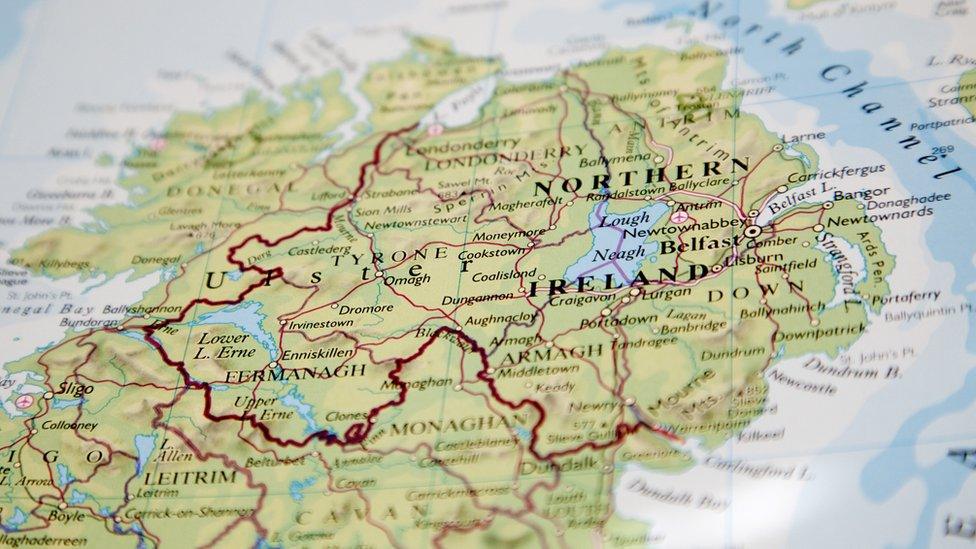NI 100: King's royal seal of approval to new NI Parliament
- Published
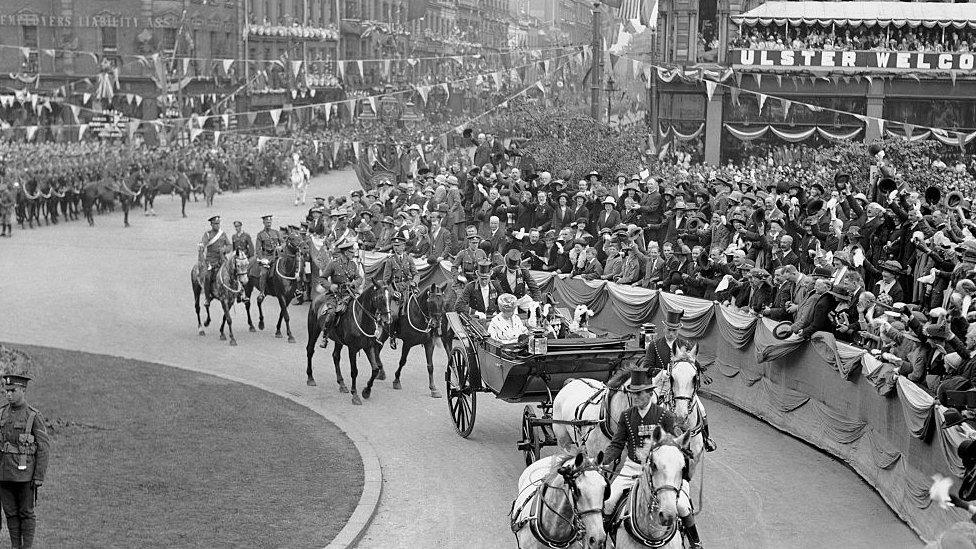
The new parliament was officially opened by King George V in June 1921
The visit of King George V to Belfast exactly 100 years ago gave a royal seal of approval to the newly-created Northern Ireland.
The centre of the city was turned red, white and blue on 22 June 1921 with flags and bunting celebrating the arrival of the monarch and his wife Queen Mary.
The visit came seven weeks after Northern Ireland had been officially created on 3 May, when legislation which partitioned the island came into force.
King George, the grandfather of the current Queen, officially opened the new Northern Ireland Parliament.
It met at Belfast City Hall as Stormont had not yet been built.
Among the 52 members of the new parliament were six nationalist and six Sinn Féin MPs, including Éamon de Valera and Michael Collins, but they did not take their seats.
Both de Valera and Collins rose to prominence during the 1916 rebellion against British rule.
De Valera went on to become taoiseach (Irish prime minister), while Collins was assassinated in 1922.
Major security operation
Tens of thousands of people lined the route as the royal couple travelled through the streets in a horse-drawn carriage.
But the historian Dr Alan Parkinson, in his book about Northern Ireland's early years A Difficult Birth, recorded how the day confirmed existing divisions.
"Loyalist celebrations merely intensified nationalist feelings of isolation," he wrote.
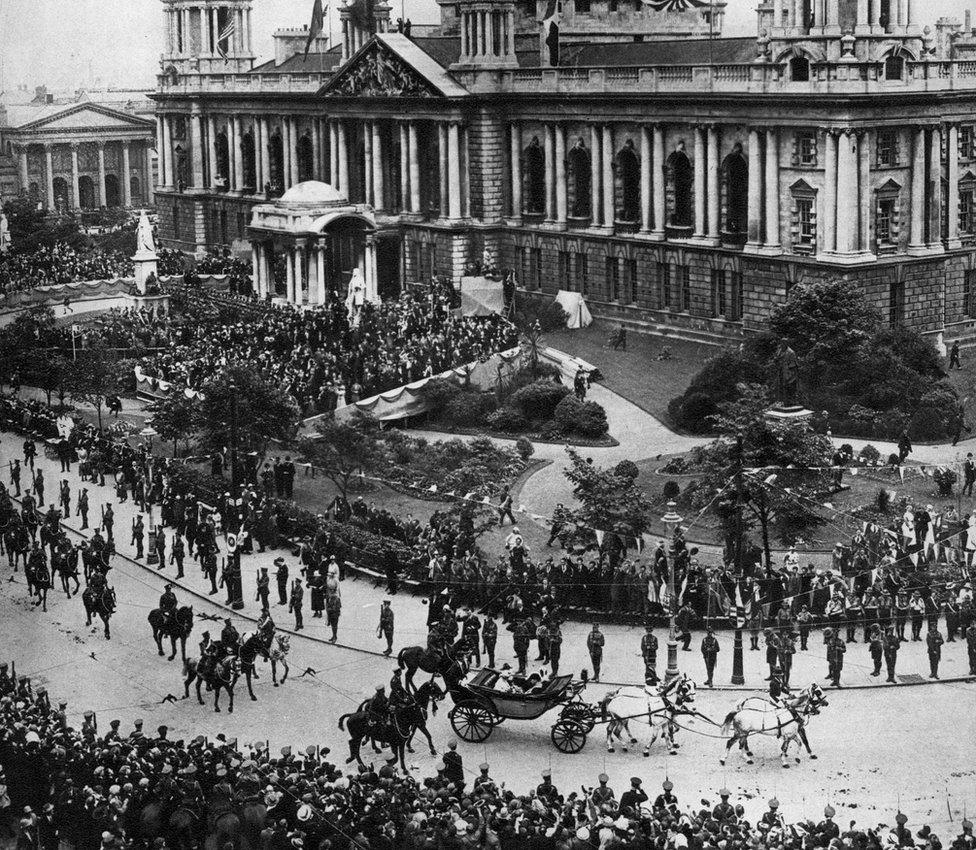
Belfast City Hall was the first home of NI's new parliament
A 32-page official programme was produced with details of the royal visit and the people the king and queen were due to meet.
The timetable of events was as follows:
11.30am - the royal yacht Victoria and Albert arrived at Donegall Quay, close to the centre of Belfast
11.40am - Royal procession along High Street, Castle Place, Donegall Place, Donegall Square North to Belfast City Hall
11.50am - Lord Mayor of Belfast William Coates greeted royal couple
12.30pm - King addressed the parliament
1pm - Lunch hosted by Prime Minister of Northern Ireland Sir James Craig
2.30pm - Royal couple visited Ulster Hall on Bedford Street
3pm - Royal procession along Dublin Road, Shaftesbury Square, Great Victoria Street, Howard Street, Donegall Square West, Donegall Square North, Donegall Place, Castle Place, High Street
3.30pm - King and Queen returned to royal yacht for voyage home
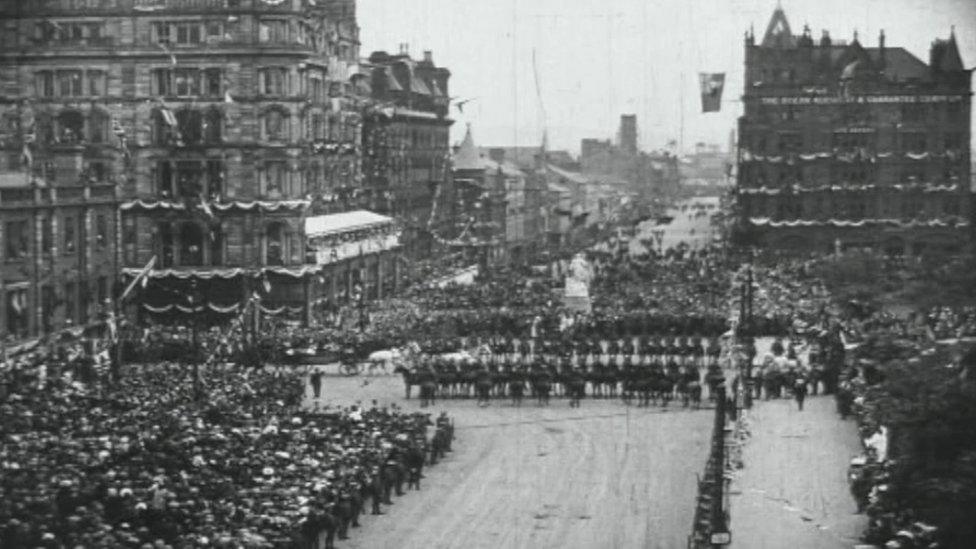
Thousands of people lined the city centre streets to see the royal couple at the opening ceremony
The royal yacht was escorted by two battleships and eight destroyers, including HMS Wolfhound, on its voyage.
A major security operation was in place throughout the four-hour visit, involving more than 1,000 police officers and soldiers.
It took place against a backdrop of sectarian violence in the city and the War of Independence, which was being fought against British rule in Ireland by the IRA.
Inside Belfast City Hall, King George used his speech to call for reconciliation on the island of Ireland.
"I appeal to all Irishmen to pause, to stretch out the hand of forbearance and conciliation, to forgive and to forget, and to join in making - for the land which they love - a new era of peace, contentment, and goodwill," he said.
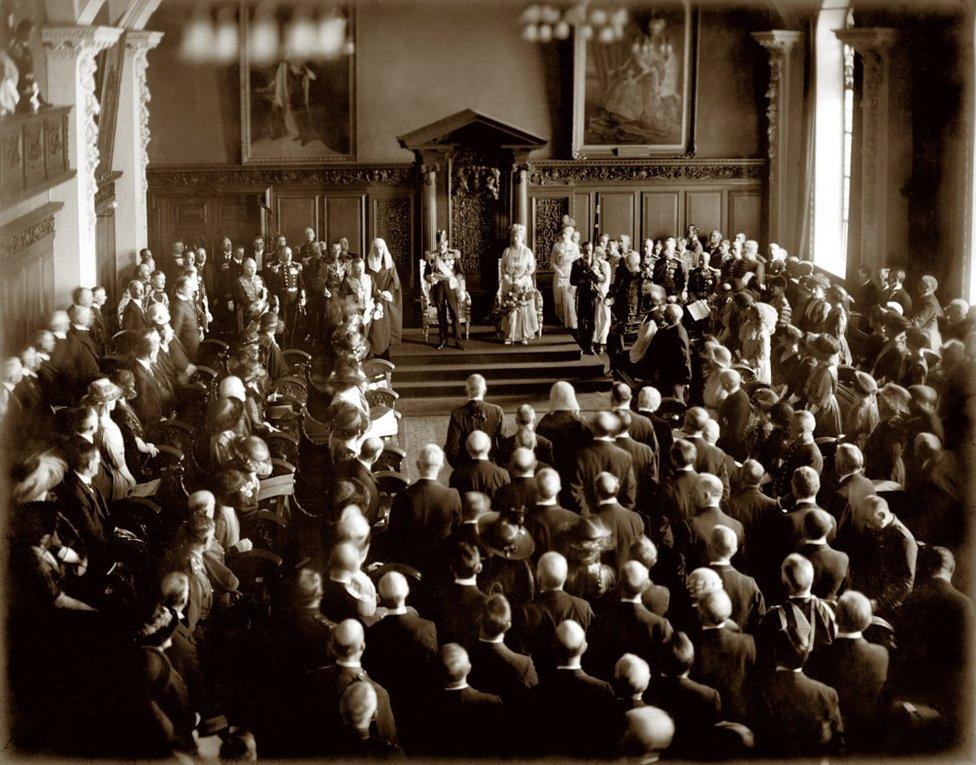
Members of the new parliament gathered inside Belfast City Hall to hear the king's speech
Three weeks after the speech, there was a truce in the War of Independence.
The historian Dr Marie Coleman wrote recently: "Arguably, his target audience was Sinn Féin, and the speech has been interpreted as an invitation to engage in a process that led soon to the truce."
However, writing in the Irish Times, external, she also pointed out that there were 160 violent deaths in the three-week period before the cessation.
In spite of security concerns around the royal visit to Belfast, the royal couple travelled around the city in an open-top carriage and were greeted by cheering crowds everywhere they went.
The official invitation list to the Ulster Hall included representatives from Queen's University Belfast; the Royal Belfast Academical Institution; the Orange Order; the Ulster Unionist Council and the Royal Ulster Yacht Club.
Singing was led at the event by the Belfast Philharmonic Society.
The pomp and ceremony of the monarch's visit meant it was seen by some as the public birthday of Northern Ireland.
There have been many royal occasions in Belfast in the 100 years since then but none with quite as much historical significance.

The BBC News NI website has a dedicated section marking the 100th anniversary of the creation of Northern Ireland and partition of the island.
There are special reports on the major figures of the time and the events that shaped modern Ireland available at bbc.co.uk/ni100.
Year '21: You can also explore how Northern Ireland was created a hundred years ago by listening to the latest Year '21 podcast on BBC Sounds or catch-up on previous episodes.

Image credits
SO1/Z/4 - With kind permission of the Deputy Keeper of the Records, Public Record Office of Northern Ireland
- Published7 June 2021
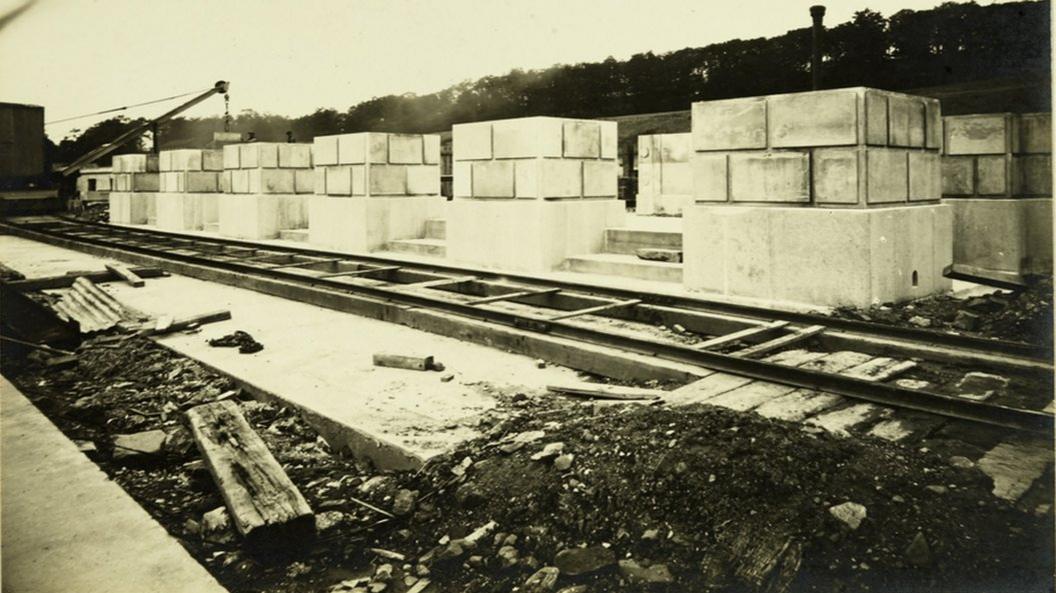
- Published6 June 2021
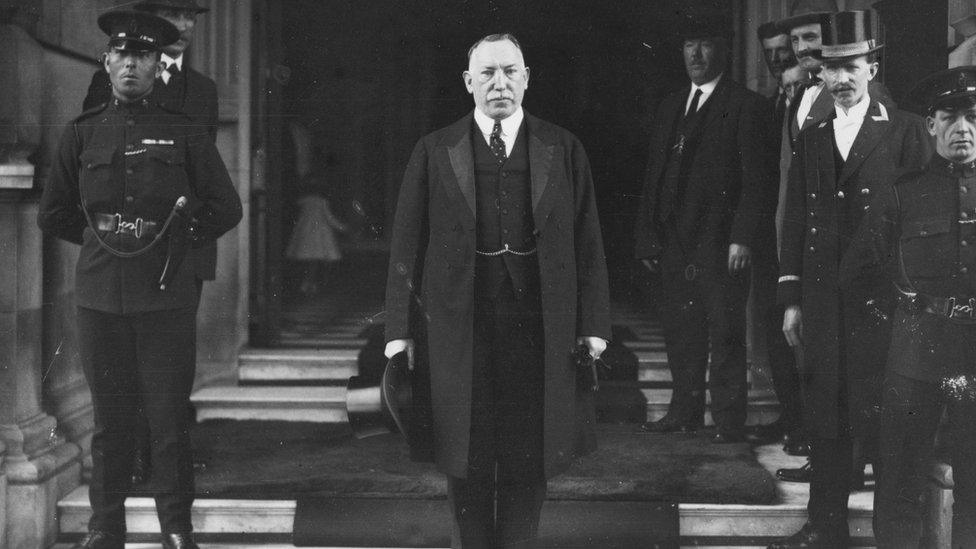
- Published21 December 2020
